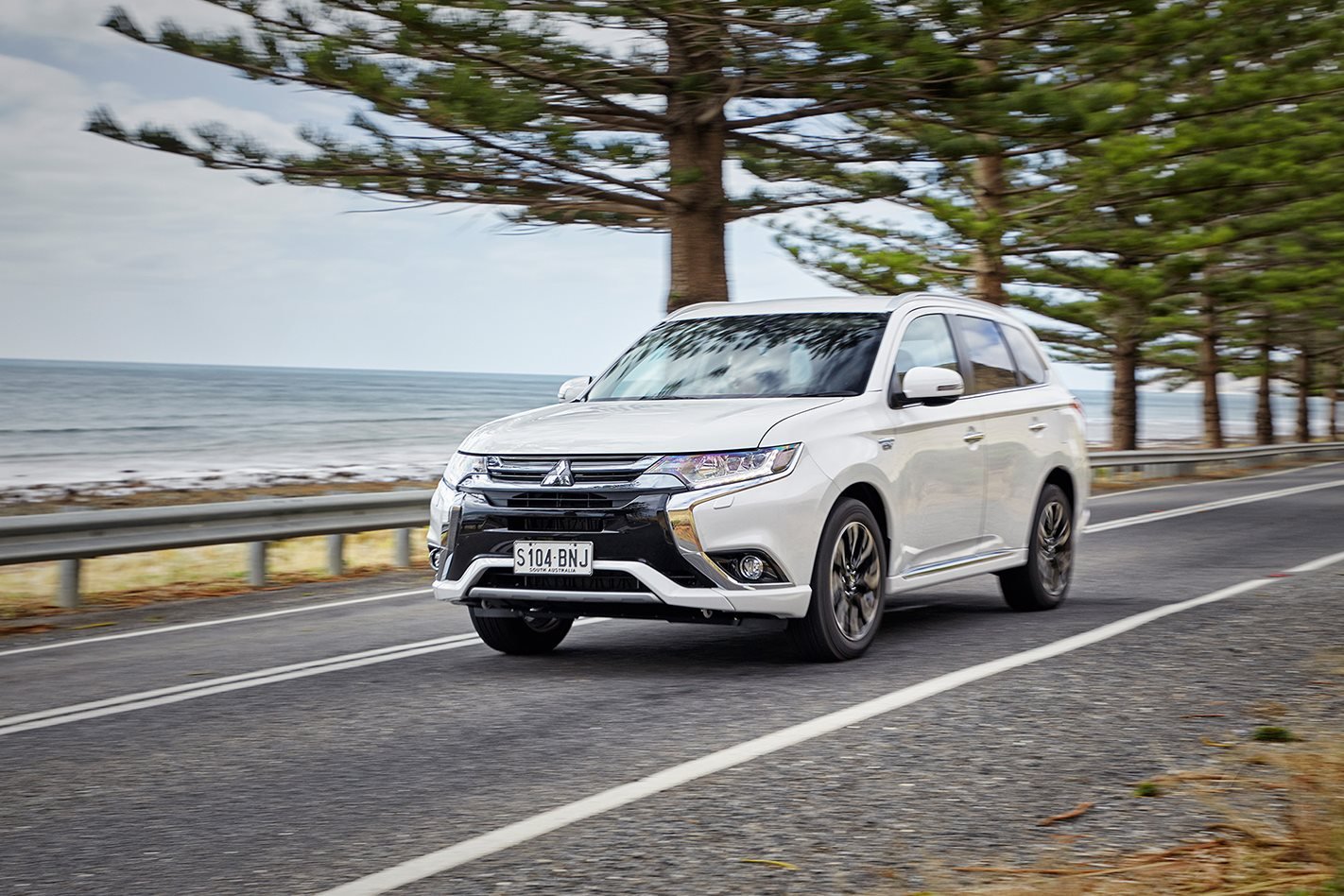RUNNING changes to Mitsubishi’s plug-in hybrid SUV make it slightly better than it was before.
WHAT IS IT? It’s the third significant tweak to Mitsubishi’s only plug-in hybrid SUV since its launch in Australia in 2014.

WHY WE’RE DRIVING IT
It’s a bit of a curiosity in terms of its low, low sales numbers, but it’s shaping up as the best-driving Outlander in the range. The petrol-electric hybrid formula, sending drive to all four wheels, remains almost the same, but it introduces new exterior looks, revised suspension and greater control over whether you burn hydrocarbons or electrons.
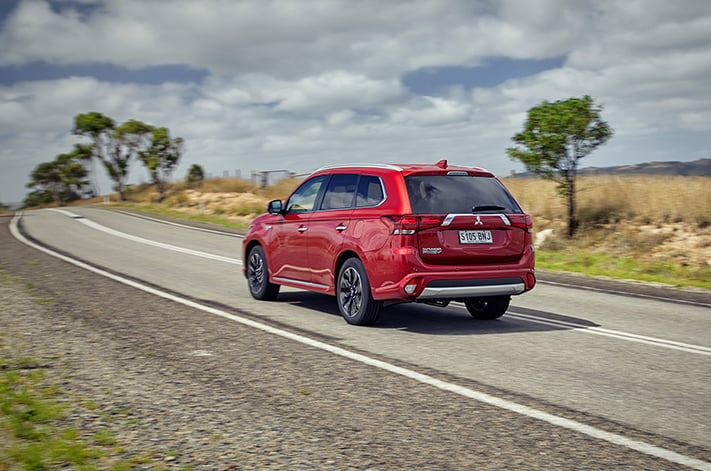
MAIN RIVALS Mitsubishi Outlander DiD Exceed; Nissan Pathfinder ST Hybrid
THE WHEELS VERDICT We were already something of a fan of the surprisingly good way the plug-in Outlander drove, and tweaks to the suspension, brakes and the engine/electric motor interface only improve it.
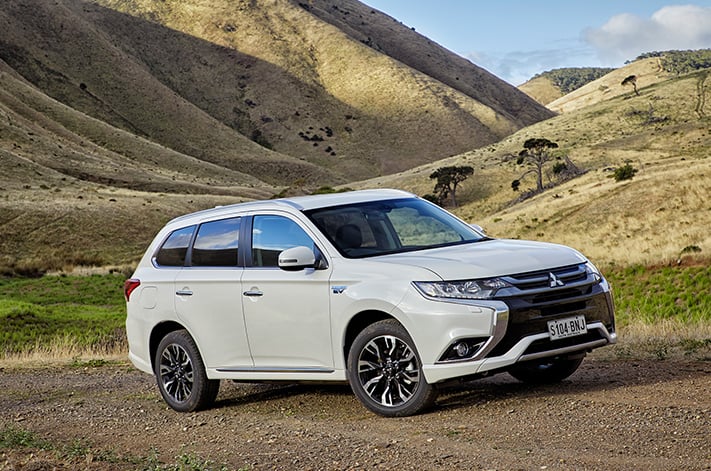
THE WHEELS REVIEW THERE’S a TV ad for a certain energy drink company with the tagline: “The massive hit that improves you a bit.” It plays up the image of someone meeting their slightly better self, and coming away from the experience feeling, let’s say, slightly downcast.
As of today, you can apply that to owners of Australia’s most affordable plug-in hybrid SUV, the Mitsubishi Outlander PHEV. Just like the ad suggests, the Japanese carmaker’s running update has improved it a bit.

The MY17 Outlander PHEV keeps the same drivetrain as before – a 2.0-litre four-cylinder petrol engine driving the front wheels, and a pair of electric motors tapping a more expensive lithium ion battery (not a cheap, bulky nickel metal hydride one, we should note). This time around, though, Mitsubishi has decided to future-proof the Outlander for a future where an 80 percent recharge will take 25 minutes, not five hours. Each Mitsubishi PHEV now comes with DC fast-charging compatibility, even if there’s only a handful of the stations scattered around Australia. More will come one day.
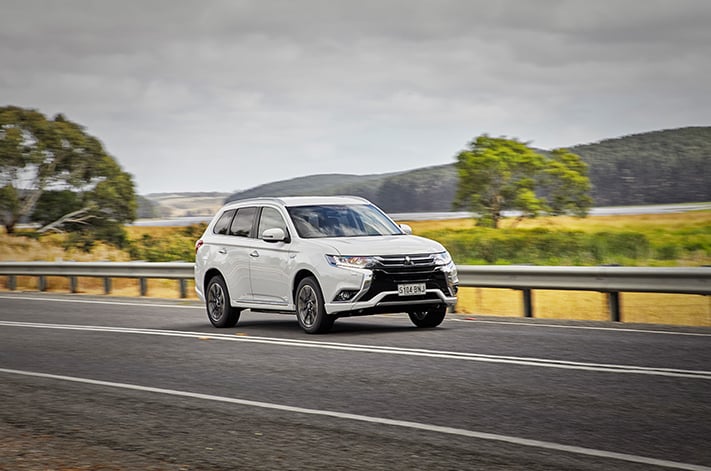
A decent change has happened under the bonnet. No one at the launch of the plug-in hybrid’s launch was able to tell us exactly what the tweaks to the drivetrain were, but previously the plug-in Outlander’s transition from full electric to engine-assisted propulsion was a bit crude. Stirred into life by a decent push on the accelerator pedal, the engine would flare angrily and the PHEV would surge forward before setting. Now, the transition is much smoother, almost seamless.
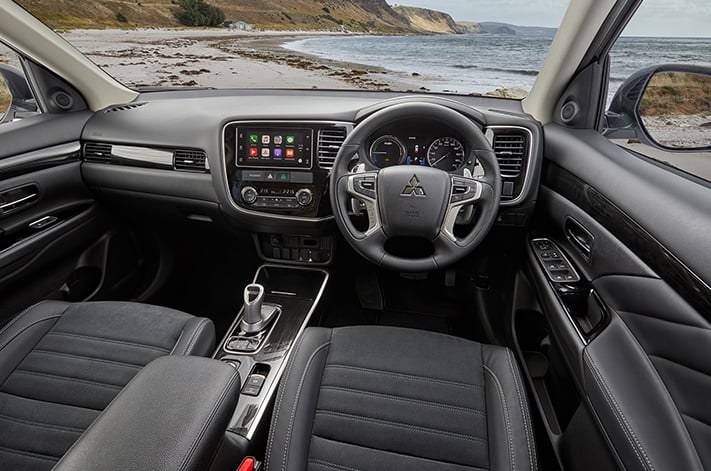
Dual-cab 4×4 ute comparison review: Mitsubishi Triton
Much was done to improve the Outlander’s ride and handling, too. The front struts have had a makeover, re-tuned damping helps to keep the SUV more settled, the rear suspension has a thicker anti-roll bar, underbody bracing is improved and new motor mounts help to reduce vibration. The front brakes step up to two-pot calipers, and the brake master cylinder is larger than before so the brakes feel less woody when combined with the five-stage regenerative braking system – the force of which can be altered by the steering column-mounted paddles.
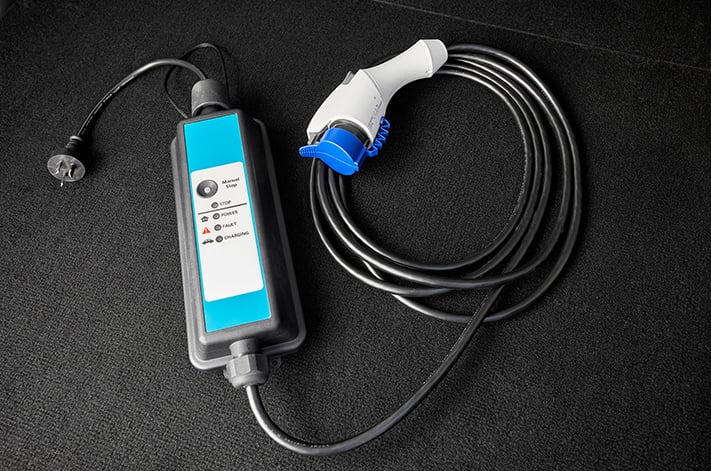
But there are carry-over compromises that come with the plug-in lifestyle. While the rest of the Outlander range can cart five adults and two children confidently, the PHEV is only a five-seater. The boot is slightly smaller because it houses the electric motors’ batteries rather than a spare tyre (even if there is still an under-floor cubby space). And if you’re going to tow, the PHEV is rated at 1500kg braked, so 500kg less than the conventionally engined SUV.

But just like the ad, there’s something slightly annoying about the new, improved Outlander PHEV: it’s copped a $3000 price rise over the old one. Part of this is down to the cost of the battery – in contrast with other car-related tech, battery prices have remained high rather than lowering over time – as well as the addition of the rapid-charging tech that most owners won’t be able to exploit until the specialised charging infrastructure becomes more widespread.
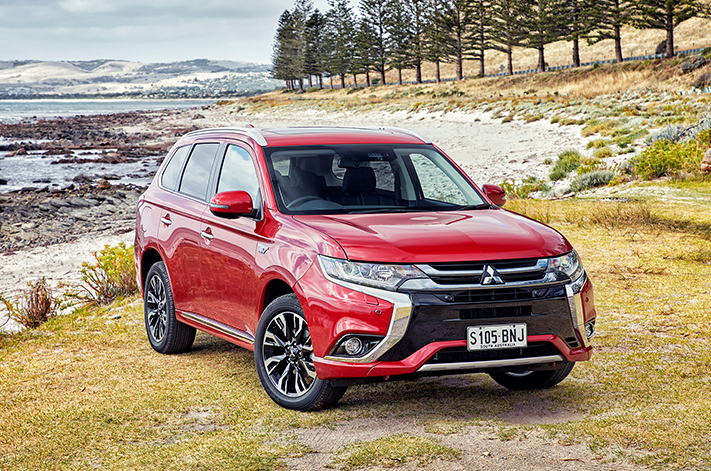
How does it go? If you’re happy with the slightly higher sticker price hit, Mitsubishi’s Outlander PHEV has improved a bit.

CHARGING AHEAD Mitsubishi Australia is asking its Japanese parent company if the plug-in Outlanders sold here can be modified to include a 240-volt power socket. Mitsubishi’s plug-in cars in Japan have the option of connecting an inverter to the SUV’s charging port, drawing enough electricity from its batteries in an emergency to power a house for up to five hours, or critical infrastructure such as traffic lights. As a live demonstration, Mitsubishi used the system to run a coffee machine at one of the stops along the Outlander PHEV launch route.
SPECS Model: Mitsubishi Outlander Exceed PHEV Engine: 1998cc 4cyl, dohc, 16v, 2 electric motors Max system power: 120kW Max system torque: 332Nm Transmission: Single speed Weight: 2270kg 0-100km/h: N/A Fuel economy: 1.7L/100km (combined) Price: $55,490 On sale: Now

